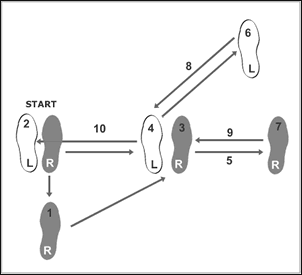 One of the things that makes mind mapping software such a value is something I’ve been inspired to call the mind mapping “two-step.” Boiled down to its essence, here it is:
One of the things that makes mind mapping software such a value is something I’ve been inspired to call the mind mapping “two-step.” Boiled down to its essence, here it is:
1. Brain dump
2. Arrange topics
(repeat)
It’s simplicity belies its power as a brainstorming and planning process. Here’s how it works.
1. Brain dump: Mind mapping software is unique because you can rearrange your content with a freedom that’s hard to match in any other type of software. This enables you to simply do a brain dump, at the same speed that your mind thinks of new ideas (or pretty darned close to it), without any regard for how those ideas are arranged. Just keep typing and creating new topics. Don’t even think about where they belong right now. We’ll deal with that later.
2. Arrange: Then, after the torrent of ideas has subsided, you can drag and drop those ideas to create logical groupings of them. Sure, with other programs like Microsoft Word, you can cut and paste blocks of text, or select and drag them. But nothing compares to the freedom of moving your ideas around in a mind map, and watching patterns of thoughts and ideas emerge as you structure them. This tends to generate even more great ideas. What’s more, if you move an idea to a new parent topic and it doesn’t seem to be a good fit there, that’s OK. Either use your program’s “undo” feature, move it to a different topic or create a new parent topic for it. In other words, mind mapping software lets you play “what if” with your ideas. And that’s very powerful.
3. Repeat: The best mind maps are usually created using an iterative process. In other words, do a brain dump, organize your ideas and then walk away from your mind map for a few hours or a few days. Do something else. Don’t think about it consciously. But the whole time, your subconscious mind will still be playing around with the ideas from your mind map, deep in the recesses of your mind. When you return to your mind map, you’ll be in a different place mentally than when you started. That means you’ll bring a fresh perspective to your mind map, and can see new ways to improve it and add to it. In addition, great stuff will start to bubble up from your unconscious mind, in the form of hunches and new ideas, which you can also incorporate into your revised mind map. That’s why a mind map created using an iterative process usually turns out better than one created in a single session.
So, there you have it – the mind mapping “two step.” A corny concept, admittedly. But it’s hard to argue with its awesome power to transmute ideas into a more tangible form on your computer screen!

Leave a Reply